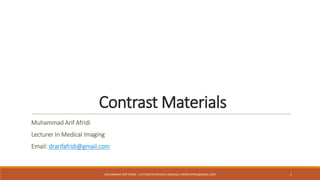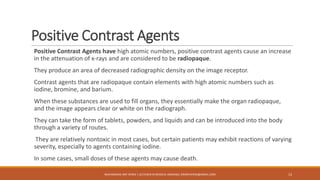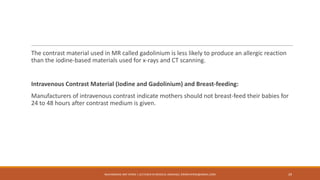Contrast materials such as barium and iodine compounds are used to improve the visibility of structures in medical imaging. They work by blocking or limiting the passage of x-rays/radiation through areas where they are introduced into the body. Contrast materials can be administered orally, rectally, or intravenously depending on the area being examined. Iodine contrasts are commonly used with CT and x-ray to improve visualization of organs and vasculature, while barium is often used for imaging of the gastrointestinal tract.





























